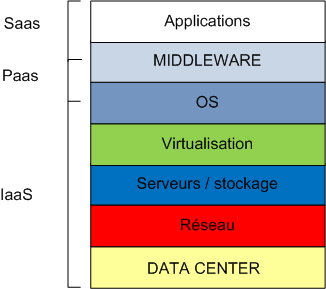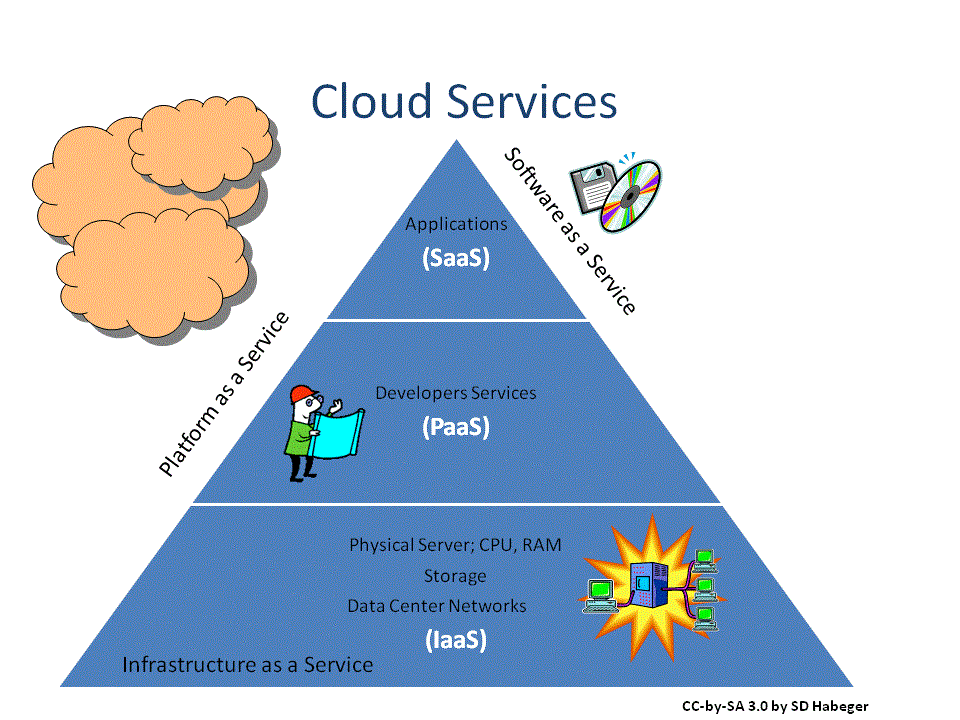Difference Between IaaS and PaaS
Businesses and organizations that once relied on expensive data centers to house their processing resources are now shifting their costs and maintenance efforts to pay-as-you-go, scalable, cloud-based solutions. Cloud is a broad concept that provides a wide range of solutions to a very large number of users. Most people refer to a cloud solution in terms of its deployment model and services model. Choosing the right service model is vital for delivering cloud-based solutions. There are three models of cloud service: Software as a Service (SaaS), Platform as a Service (PaaS), and Infrastructure as a Service (IaaS). Each cloud service model provides a level of abstraction that reduces the efforts required by the consumer to build and deploy systems. But today we’re about to help you understand some key differences between IaaS and PaaS.
What is Infrastructure as a Service (IaaS)?
Infrastructure as a Service (IaaS) is at the lowest layer in the service delivery hierarchy and provides a virtual data center within the cloud. IaaS isn’t actually a new concept. In fact, people have been collocating in data centers since data centers have been around. It provides the very basic computing capabilities – machines with operating systems and storage as standardized services over the network. It delivers complete infrastructure, typically a platform virtualization environment, as a service along with raw storage and networking. IaaS provides a mechanism for people to replace all their data center hardware needs. Common IaaS services include load balancing, host provisioning, network connectivity, firewalls, and storage. It enacts the ability to abstract resources as well as deliver physical and logical connectivity to those resources and provide a set of APIs, which allow interaction with the infrastructure by clients. The most prominent example of IaaS is Amazon Web Services (AWS).
What is Platform as a Service (PaaS)?
Beyond IaaS, several cloud services provide application layer support for big data work, sometimes referred to as managed solutions, or Platform as a Service (PaaS). What IaaS is to infrastructure, PaaS is to the applications. It abstracts much of the standard application stack-level functions and provides those functions as a service. It provides the underlying hardware technology such as virtual servers, operating systems, database solutions, developer tools and network support. The hardware and software is managed by the platform provider. The provider facilitates deployment of cloud applications by managing the cloud software development platform, removing the need to configure or scale things such as database and reducing your workload and maintenance burden. Developers need not worry about performing hardware or operating system upgrades. Instead they have control over the deployed applications and possibly application hosting environment configurations. Today, the well-known PaaS solution providers include Windows Azure and Google App Engine.
Difference between IaaS and PaaS
Model of IaaS and PaaS
IaaS and PaaS are very different from one another and Platform as a Service is not a feature of Infrastructure as a Service. What IaaS is to infrastructure, PaaS is to the applications. IaaS is all about resources and by resources, we mean servers, disks, networks, and IP addresses. IaaS provides all these resources on demand. PaaS is all about applications. An application is a system, a combination of code and all the services that communicate with that code at any point in time and it is not a resource.
Concept
IaaS model provides a virtual data center within the cloud. With IaaS, you get dedicated servers with dedicated IP addresses. It is the fastest version of dedicated web hosting in terms of provisioning. It allows the infrastructure provider to abstract away infrastructure-specific details and resources as well as to deliver physical and logical connectivity to those resources. However, using IaaS only brings you so far with big data applications; they don’t address anything at a higher level. Combine the power of dedicated hosting together with the ease of shared hosting and you get PaaS.
Delivery
IaaS, as the name suggests, delivers cloud computing infrastructure and it is a means of delivering very basic computing capability – machines with operating systems and storage as standardized services over the network. IaaS provides physical and virtualized servers, cloud-based data storage, and more. PaaS abstracts much of the standard application stack-level functions and provides those functions as a service. It provides the underlying hardware technology such as virtual servers, operating systems, database solutions, developer tools and network support.
Examples
The most prominent example of Infrastructure as a Service is Amazon Web Services (AWS) which is the name given by Amazon to its cloud computing offerings. Its Elastic Compute Cloud (EC2) and Simple Storage Service (S3) products offer bare-bone computing and storage services. Other examples of IaaS are Google Compute Engine, CISCO Metapod, Rackspace, DigitalOcean, etc. The well-known PaaS solution providers include Windows Azure, Google App Engine. Force.com, Apache Stratos, Heroku, OpenShift, and more.
Iaas vs. PaaS: Comparison Chart
Summary of IaaS vs. PaaS
In a nutshell, what IaaS is to infrastructure, PaaS is to the applications. IaaS is all about resources and by resources, we mean servers, disks, networks, and IP addresses. IaaS provides all these resources on demand. PaaS, on the other hand, provides the underlying hardware technology such as virtual servers, operating systems, database solutions, developer tools and network support. It abstracts much of the standard application stack-level functions and provides those functions as a service. Each cloud service model provides a level of abstraction that reduces the efforts required by the consumer to build and deploy systems.
- Difference Between Caucus and Primary - June 18, 2024
- Difference Between PPO and POS - May 30, 2024
- Difference Between RFID and NFC - May 28, 2024
Search DifferenceBetween.net :
Leave a Response
References :
[0]Image credit: https://commons.wikimedia.org/wiki/File:Cloud_Services.gif
[1]Image credit: https://commons.wikimedia.org/wiki/File:Niveaux_de_service_cloud.png
[2]Kavis, Michael J. Architecting the Cloud. Hoboken, New Jersey: John Wiley & Sons, 2014. Print
[3]Jamsa, Kris. Cloud Computing. Burlington, Massachusetts: Jones & Bartlett Publishers, 2011. Print
[4]Kantola, Jussi and Waldemar Karwowski. Knowledge Service Engineering Handbook. Boca Raton, Florida: CRC Press, 2012. Print
[5]James, Edd Wilder. Planning For Big Data. Sebastopol, California: O'Reilly Media, 2012. Print
[6]McGrath, Michael P. Understanding PaaS: Unleash the Power of Cloud Computing. Sebastopol, California: O'Reilly Media, 2012. Print



